Encouraging our students to become more intentional writers can feel daunting. Some of us might feel like we don’t know enough about writing to implement a strong routine that will support our students writing skills. Or it may feel like there just isn’t enough time in the day to incorporate a beneficial writing lesson.
It is important to start with the basics to support our students in becoming more intentional writers. Sentence writing. Sometimes we try too much when it comes to writing routines when our students really need writing support at the most basic level.
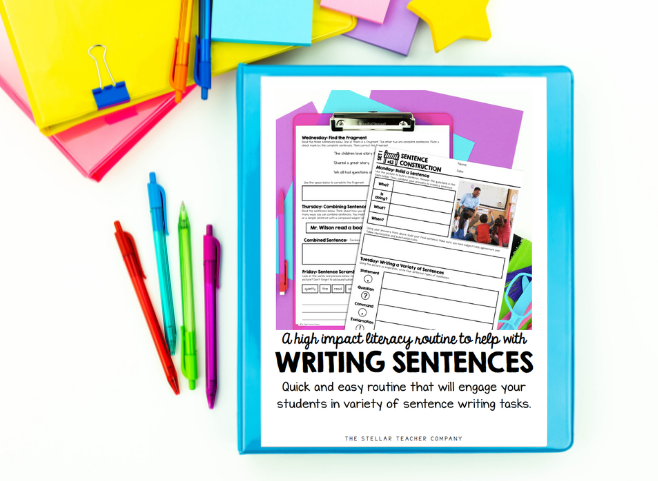
Let’s start with thinking about why sentence writing activities are important.
Why is it important to teach sentence writing?
- Sentences are the building blocks for all writing your students will do – from essays to reading responses – they need to be able to communicate effectively with clear sentences.
- If we want our students to be skilled readers, then they need to have a strong understanding of language and sentence structure. I talk more in-depth about this in Episode 87 of the podcast: Breaking Down the Elements of Language Comprehension.
- As students move through the education system, they are going to encounter more and more complex texts. These texts will include a variety of sentence types like simple, compound, and complex. When students understand various sentence structures, they will likely be able to extract meaning from more complex readings.
- Teaching sentence writing is the first step to helping your students build more confidence when it comes to writing.
I’ve been thinking about the importance of syntax and sentence structure since diving into the science of reading last November. It is so important to give students help, support, and opportunities to develop their confidence in writing at the sentence level, so I’ve created a new high-impact literacy routine to help you do just that!
What does this routine look like for students?
This new sentence writing routine will be beneficial in many ways. To help you get a better picture of the entire routine, let’s start with an overview:
- Students will use a picture (that changes weekly!) as inspiration for their writing.
- Each day students will complete a short sentence-based activity that is connected to the image.
- The activity changes day-to-day. Each activity will help develop and improve your student’s understanding of sentence structures and give them authentic writing practice.
- These are quick yet impactful writing activities! This routine should take you around 3-5 minutes a day. This routine could be used as a morning task, warm-up to writing block, end-of-day task, or even a literacy center.
Of course, it will be even more beneficial to build in time to review and discuss the sentence activities with your students as a whole group. So with the addition of a reflection period, this routine can take up to 10 minutes.
Keep in mind this resource is a year-long routine, and your students will complete the same sentence activities all year. This resource was structured this way to give students plenty of practice. Your students will make mistakes, especially in the beginning, and that’s okay! These sentence activities will give your students constant and continuous opportunities to practice and refine their ability to understand and write various sentences.

Now let’s break down what each day of the weekly routine will look like.
Monday: Build A Sentence
Every Monday, students will use the weekly picture to build a sentence. Students are given prompts like…
- Who?
- Is doing what?
- When?
- Where?
- Why?
- How often?
Students will answer each question with 2-3 words based on what they see in the picture, then they will combine their answers to build a sentence.
This sentence activity is beneficial for students because:
- It supports students understanding of how to write detailed sentences. As time goes on, students will write more expanded and interesting sentences.
- The prompts help them think about all the details that can be included in one sentence.
- Students are being challenged to think about meaningful details they can include in a sentence. Sometimes the details for a sentence will come more easily than others, depending on your student’s background knowledge and understanding of the picture.
Tuesday: Writing a Variety of Sentences
Every Tuesday, students will use the weekly picture to write a variety of sentence types. They will use the picture to inspire a statement, question, command, and exclamation.
I love this activity because, as simple as it may seem, some examples will be more difficult than others! This is also a great way for students to become familiar with a variety of sentence lengths. A command can be as simple as Sit down or Stop talking. They are still complete sentences, even though they are only two words long. The Tuesday sentence writing activity will give you and your students many chances to discuss types of sentences.
This sentence activity is beneficial for students because:
- Even though this seems like a very basic task, it acts as a foundation to help students understand how to vary their sentence structures and lengths.
- When students start to write paragraphs or longer essays, you can encourage them to use a variety of sentence types in their writing… and because every week, they practice writing statements, questions, commands, and exclamations, they will feel confident in using all four types in their writing.
- In addition, this writing task gives students a concrete opportunity to practice using correct capitalization and punctuation rules.
Wednesday: Find the Fragment
On Wednesdays, students will be given three statements/sentences, two of which are complete sentences with a proper subject and verb phrases. One of the sentences will be a fragment. Students must identify the fragment and then rewrite it as a complete sentence.
Students will need to add details to the fragment’s beginning, middle, or end to write a complete sentence.
This sentence activity is beneficial for students because:
- This activity helps students solidify the idea of what a complete sentence is.
- A lot of times we define a sentence as “a complete thought,” but really, a better definition is a lot more precise. A sentence is a set of words that contains a subject (noun phrases) and a predicate (verb phrase). A sentence consists of a main clause (independent clause) and can sometimes have one or more subordinate (dependent) clauses.
- If students understand this definition of a sentence, then when they see a fragment, they are much more likely to be able to identify what is missing… does the fragment need a noun phrase, or does it need a verb phrase in order to make it a complete sentence.
This sentence activity requires your students to not only identify a sentence fragment but also think about what is missing and how they can add in the details needed to write a complete sentence. You could even take it a step further and ask students to use the fragment to write more than one sentence type.
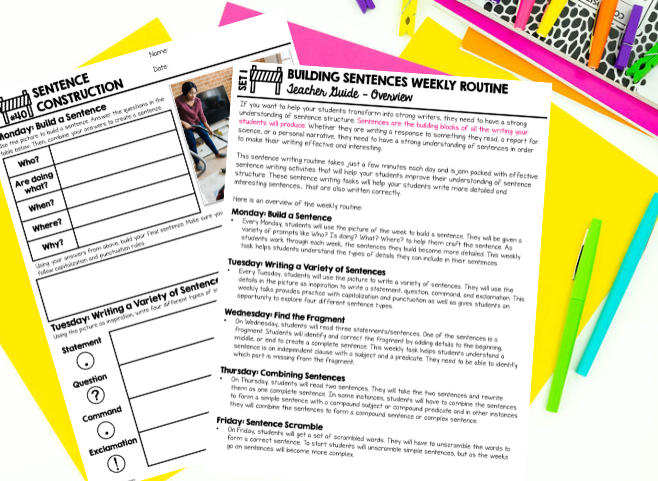
Thursday: Combining Sentences
Every Thursday, students will be given 2 – 3 sentences they need to combine to form one sentence. In some instances, students will have to combine the sentences to form a simple sentence with a compound subject or compound predicate. Or sometimes, they will combine the sentences to form a compound or complex sentence.
This sentence activity is beneficial for students because:
- When students are asked to combine two or more sentences, it allows them to review and practice various grammar rules (in a real and authentic way).
- Students can often combine sentences in more than one way, so this task will help with their sentence writing fluency. They will become more confident with how to combine sentences to form compound and complex sentences.
- This task also helps students understand that they can create more complex and interesting sentences in their own writing.
- Once students become familiar and proficient with this task, you can encourage them to use this strategy in their writing. For example, when they are revising, they can identify two sentences that can be combined, or they might just develop the ideas in their head into a complex sentence when they start writing.
Friday: Sentence Scramble
On Friday, students will get a set of scrambled words that are connected to the picture. They will have to unscramble the words to form a correct sentence. Throughout the year, the sentence scramble activity will become more and more challenging as more words are added to be unscrambled. In the first few weeks, students will be given 5-6 words to unscramble to form a simple sentence. Students will eventually unscramble 10+ words to form more complex sentences.
This sentence activity is beneficial for students because:
- This activity helps students understand the role words play in a sentence and the importance of word order.
- This sentence writing activity will help students realize the order of words matters in a sentence. They can’t just write words in any order and have a sentence that makes sense. The rules of sentence structure matter.
- This is a great application-based task. In order for students to unscramble the sentence successfully, they need to be able to identify words that might be a part of the subject (noun phrase telling who or what the sentence is about) and predicate (verb phrase telling what is happening or describing the action).
- It’s a great chance to reinforce capitalization and punctuation rules as well.

All of these tasks take just a short amount of time each day but will help your students become much stronger writers and readers at the sentence level. I hope this high-impact literacy routine saves you time and helps your students become just a little more confident and independent with reading and writing.
Put It Into Practice:
- Download my Sentence Structure Freebie to get an inside look at this sentence writing routine and implement it in your classroom as soon as tomorrow!
- Check out podcast Episode #101: A Literacy Routine for Building Students’ Sentence Structure skills to learn more about this new high-impact literacy for sentence writing.
- Join us inside The Stellar Literacy Collective, where you will get access to a resource library filled with reading resources, including the 40-Week Sentence Structure resource outlined in this post.
Happy Teaching!
Sentence Writing Routine Free Sample
If your students struggle to write at the sentence level, this new literacy routine is going to be your new best friend. Each day of the week your students will engage in a quick (yet effective) sentence writing task that will help them become more confident and creative writers. Say goodbye to fragments and boring sentences, and say hello to complex sentences with lots of details!
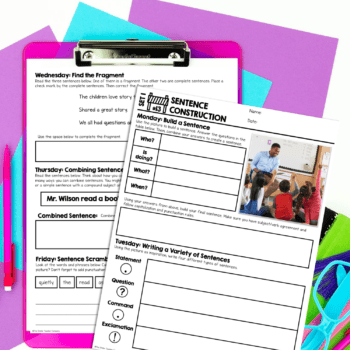



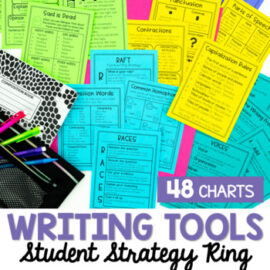
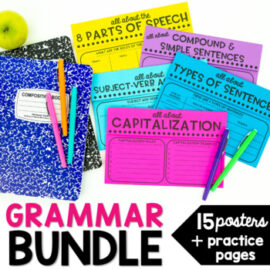
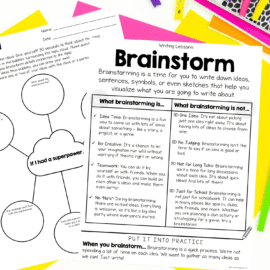
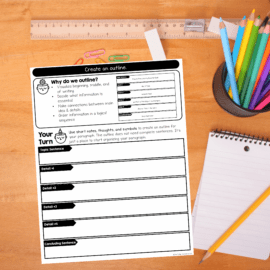
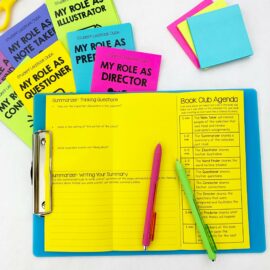









Is there somewhere I can buy this resource?
Hey Klara,
Yes. You can find this resource in my TPT store: https://www.teacherspayteachers.com/Product/Sentence-Writing-Routine-Year-Long-Routine-to-Practice-Sentence-Structure-8532561 Hope your students love it!